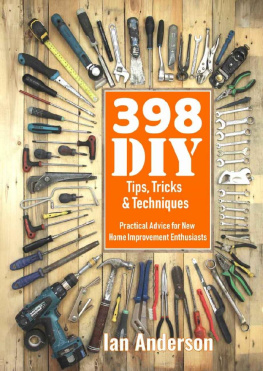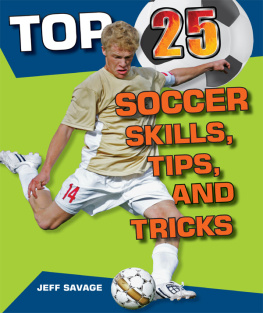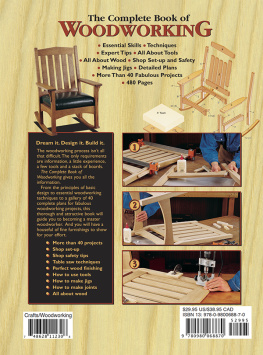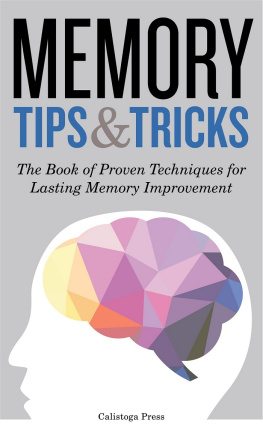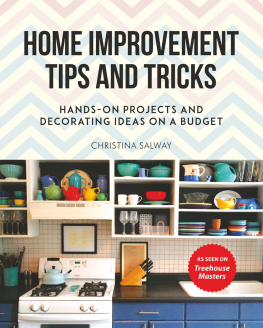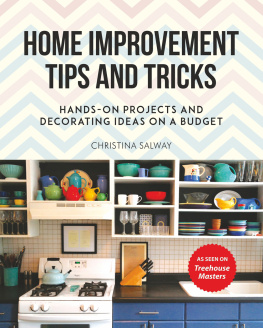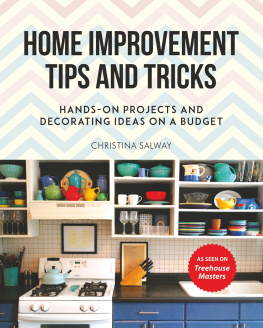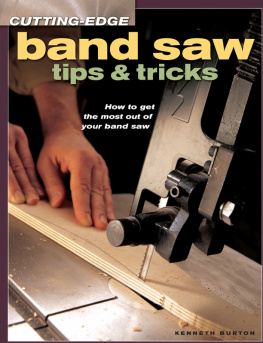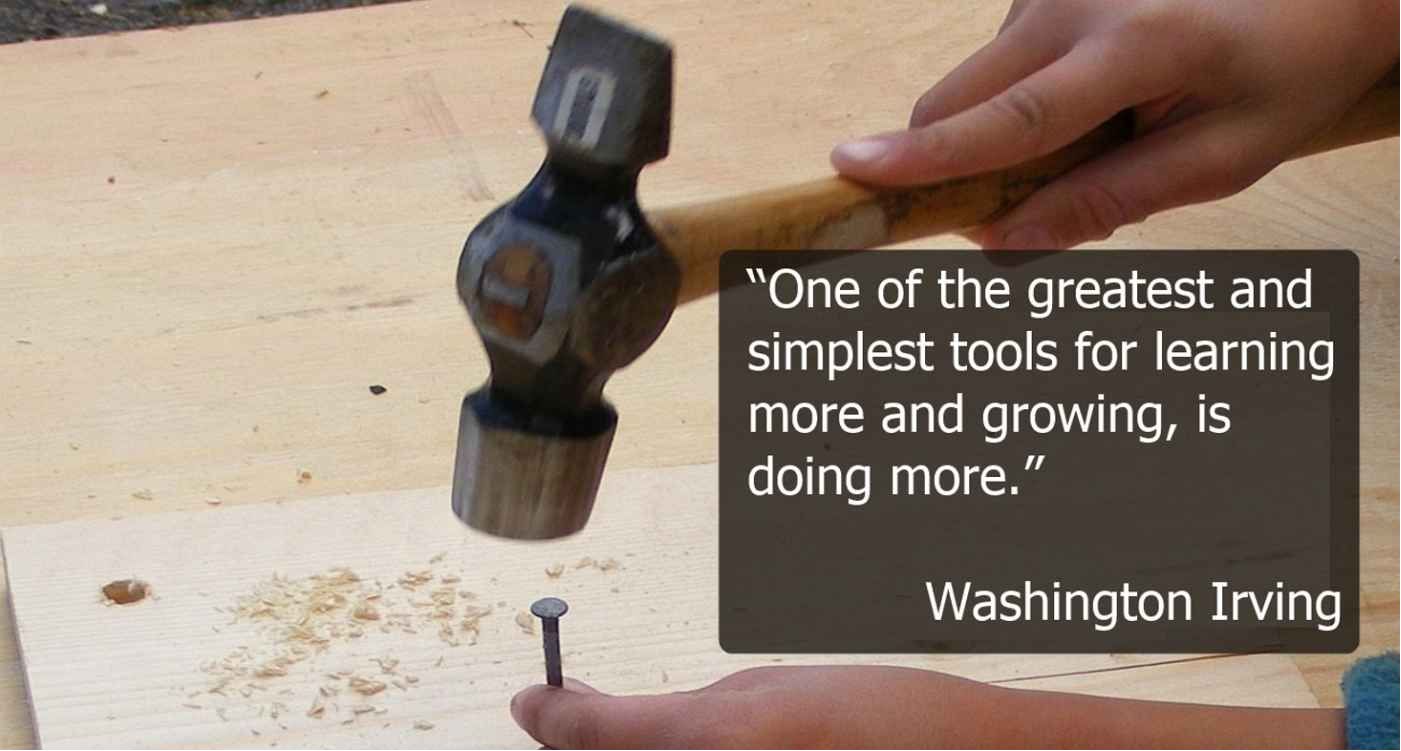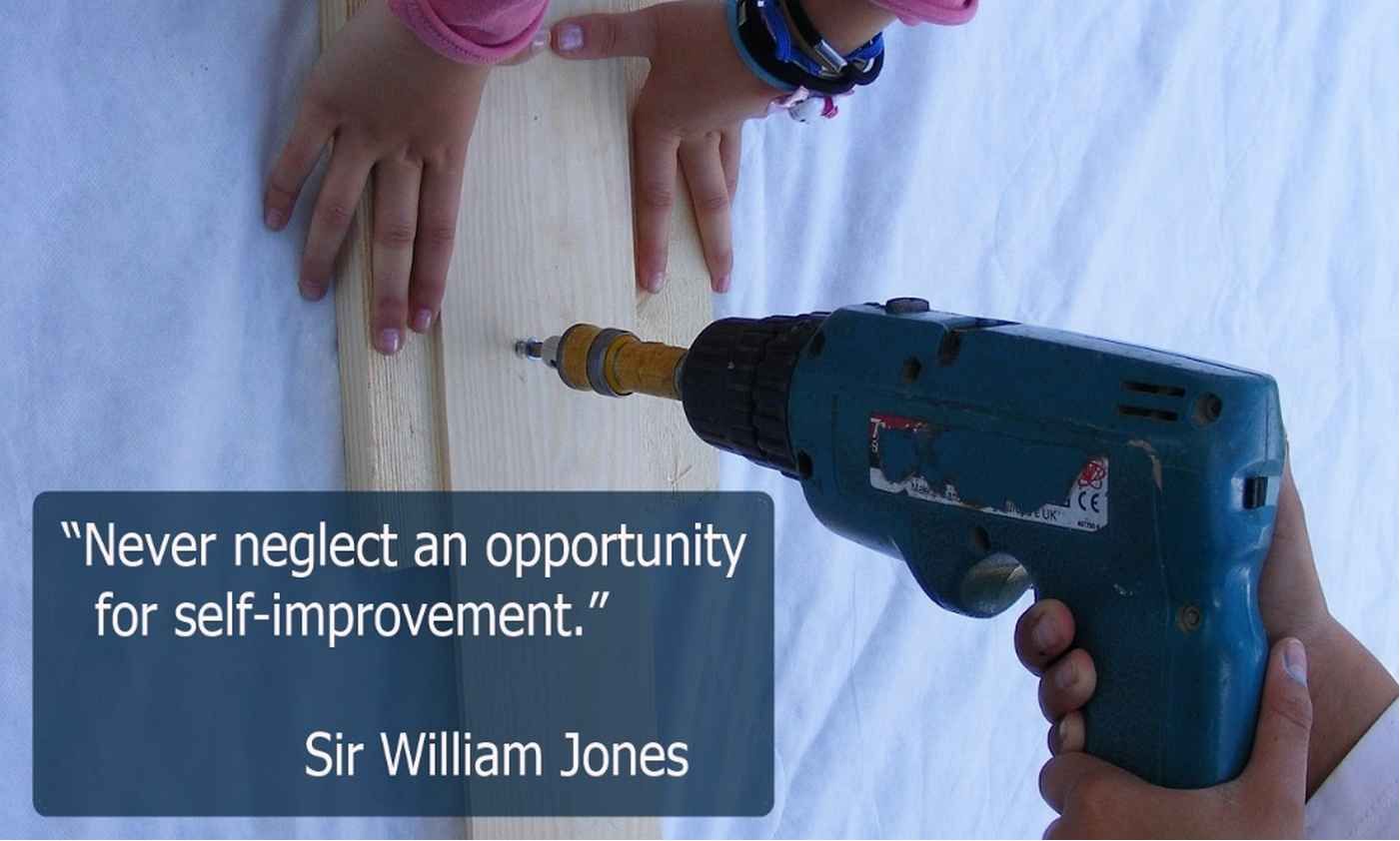398 DIY
Tips, Tricks and Techniques
Practical Advice for New
Home Improvement Enthusiasts
Ian Anderson MSc LCGI
HANDYCROWD MEDIA
398 DIY Tips, Tricks & Techniques
Practical Advice for New
Home Improvement Enthusiasts
Copyright 2019 by Ian Anderson, who has asserted his right to be identified as the author of this work in accordance with the Copyright, Designs and Patents Act 1988.
All rights reserved. No part of this publication may be reproduced, stored in a retrieval system, or transmitted in any form or by any means electronic, mechanical, photocopying, recording or otherwise, without the prior permission of the copyright owner. But Im pretty cool about that sort of thing, so for any enquiries regarding use please email Ian Anderson:
Published by handycrowd media Reg No. 995979268 Norway
ISBN 978-82-93249-14-6
Disclaimer: The author has made every effort to ensure that the information in this book is accurate. However, since it cannot be determined what you intend to do with this information or how competent you are, it shall be your own responsibility to ensure this information meets your specific requirements.
The author is a professional builder educated in the UK and the working practices and observations in this book reflect this. It is your responsibility to ensure the advice given in this book is suitable for your country or situation as working practices and rules differ from country to country. It is your responsibility as the homeowner to ensure you have permission to carry out alterations and additions to your home.
Seek local professional advice if you are in any way unsure.
Contents
Id like to dedicate this book to
Ian Welby, who trusted his gut feeling about a 19-year-old stranger with little more than a trowel to his name.
Preface
O ver the past 35 years Ive worked with many people; read countless books, articles & blog posts and during all that time, Ive never found someone I couldnt learn something from. Often, its something small but useful, or it might be something interesting or even something thats just amusing. But occasionally its something fundamental. In those instances, I always find it mind boggling that I could get to my age and not know about this particular thing, since it appears to be common knowledge.
So heres the thing, you dont know, what you dont know. And the only way to minimise the things you dont know, is to constantly expand the people you touch. Online or offline, it doesnt matter much, youre going to learn something from everyone.
Now, were going to spend a little while together in this book, but Im sad to say that I dont know you, or even what youre capable of. But its my hope, as our paths cross on these pages, that I can teach you something small or maybe even something revelatory. After all weve both taken a different route to get to this point.
And if life has taught me anything at all, its that Im sure you could teach me something too.
Dull But Important Safety Notice
T his book talks about using tools, working with electrical items, climbing on ladders, roofs, or scaffolding etc. It also talks about working with heavy or potentially dangerous materials and machines. Staying safe must be your No.1 priority . You should wear the right personal protection equipment for the job and get into the habit of working safely, every time.
Go online and seek the specific advice you need to stay safe during your planned project, the hse.gov.uk and osha.gov websites are good places to start. People are hurt every minute of every day, whether it is you or not, is your choice.
I dont want to hear you hurt yourself because you did something reckless or dumb, because then Id feel bad and you dont want that. Always take your time, be careful and for goodness sake use your common sense, because if it scares you, or feels unsafe or dangerous it probably is!
So be careful, this stuff can hurt a lot
Introduction
I ve been saving tips and tricks and otherwise useful nuggets of information for decades now. Occasionally scribbled down in my notebook, but more often its just rattling around in my head somewhere. Time now to let them loose into the world and see if they can help anyone else. Most of it Ive learned on the job, either working alongside folks of all abilities or even, dare I say it, by making my own mistakes.
So welcome to my mental brain dump, and like all brainstorming sessions, its a bit of a mix, and an eclectic one at that. I did try to categorize the list, I really did, but I know it still feels a bit random. Nevertheless, theyre all real tips and advice taken from real live situations on real jobs. Did I mention it was real? Yup.
You can of course choose to read the book from cover to cover wearing your comfy pink pyjamas in your favourite armchair, or you could cherry pick, sitting on the toilet (eww!). Either way, I hope youll use these tips as a starting point and put into practice what you learn.
A Note About Stuff
I like the word stuff. It covers a lot of, well, erm.stuff! Because this book isnt a step-by-step guide, Ill refer to lots of things as simply stuff. Just replace the word stuff with tap washer, toaster, tractor or whatever else youre working on beginning with T
Building Up Your General DIY Knowledge
Lets start right at the beginning
But Im Just Not Seeing It!
Take another look. No, no dont give me that look! I mean put your prejudices aside for a moment and take a really, really, really proper look. Because eighty percent of what we learn is visual. Remember how you can never get things back into the box they came in? Thats because you forgot to notice how everything was arranged in your excitement to get at the contents.
Even the simplest of observations will teach you something about material or function if you let it. But it requires a little effort to do this, because your brain is a super computer with filters. By default, your clever brain cherry picks the things youre interested in and throws them in front of you like roadkill; and pretty much ignores everything else. (I know, shocking, isnt it?).
Rewire Your Brain
(and no, it doesnt hurt)
Plus, its easy. You just need to change your brains mental algorithm; to re-write your internal code. In other words, fine tune your mental radar to constantly remind yourself to notice the stuff youre using. Im sure youll recognise the scenario where youve bought something new, a car for example, and then you start seeing them everywhere? Thats your radar working; those cars were there before, but your brain ignored them because you werent looking for them. See, easy.
Disengage Your Autopilot
And keep it switched off (not if youre an actual pilot in your day job though, obviously).
Instead, make extra effort to pay particular attention to the things you normally do without much thought (your autopilot). From putting more paper in the photocopier to driving your car, start noticing details.
This gets you thinking about the way your everyday things work: Look out for motion or movement, leverage, force, power, and alignment; especially how it relates to your body or how its used.
Next page
